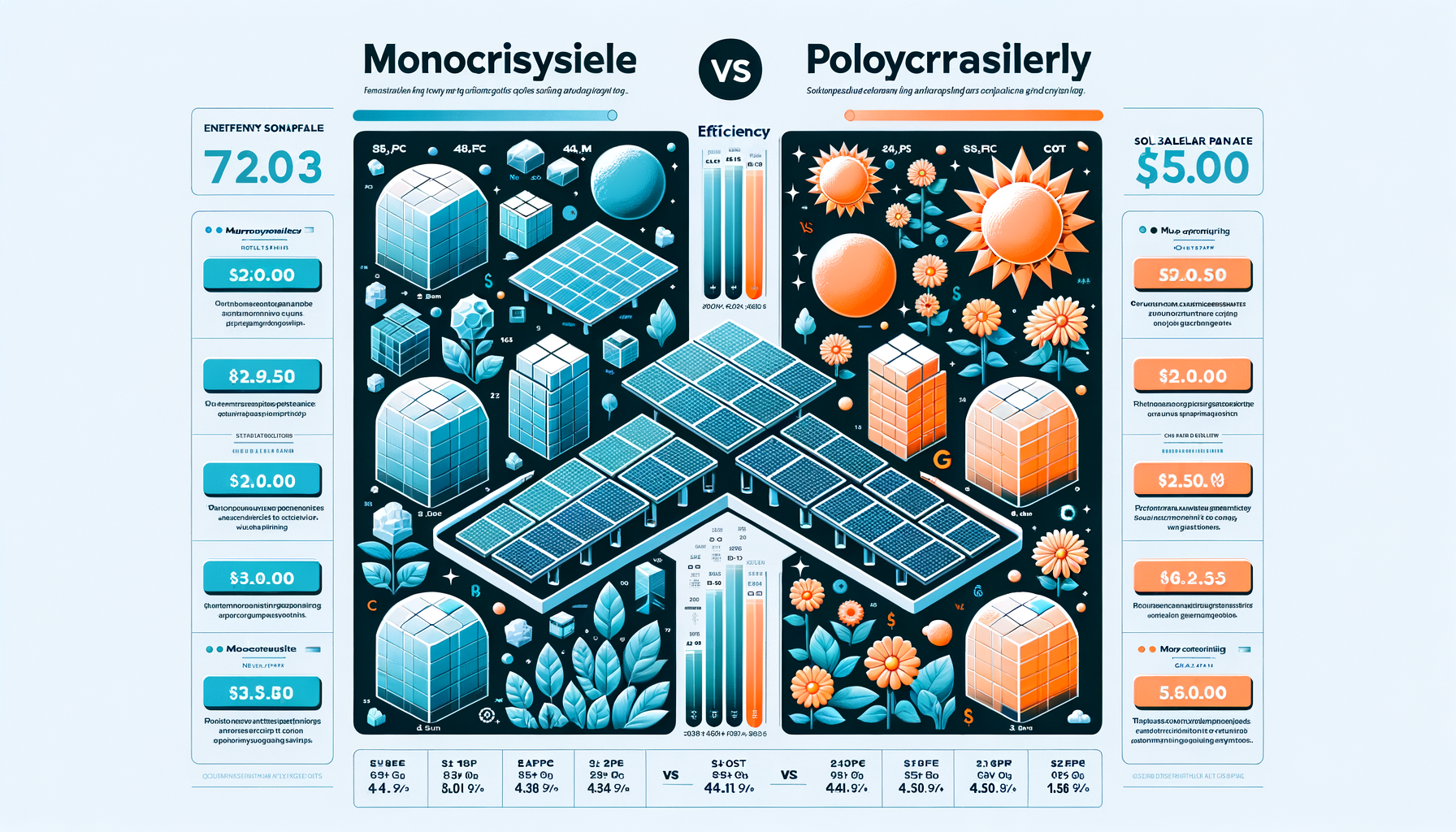Are Monocrystalline Solar Panels Better Than Polycrystalline?

Updated 4 months ago
Are Monocrystalline Solar Panels Better Than Polycrystalline?
Going green with solar technology involves big decisions, not the least of which is choosing between monocrystalline and polycrystalline solar panels. As a homeowner looking to harness the sun's power, understanding the differences is crucial to making an informed investment.
Understanding the Basics: Monocrystalline vs Polycrystalline
Monocrystalline solar panels are made from single-crystal silicon, giving them a uniform appearance with their dark black hue. Their high-purity silicon makes them more efficient at converting sunlight into electricity. On the other hand, polycrystalline panels are crafted from multiple silicon crystals, visible through their bluish hue and fragmented texture, and are generally less expensive but also less efficient than their monocrystalline counterparts.
Efficiency Matters
In terms of efficiency, monocrystalline panels lead the race. They can convert more sunlight into electricity, often reaching efficiency rates of over 20%. Polycrystalline panels usually hover around 15-17%. While this may seem like a small gap, it translates to a significant difference in energy production, especially in limited space scenarios.
Longevity and Durability
Both types of panels are tested for durability, and they usually come with a warranty of 25 years or more. However, monocrystalline panels have an edge in longevity. The purity of the silicon allows for a more stable lattice structure, which can lessen the degradation rate over time.
Cost Analysis
When it comes to cost, polycrystalline panels win, often being more affordable per watt. But lower upfront costs may not equate to better value. With higher energy yields and longer lifespans, monocrystalline panels could offer more savings in the long run.
Climate Considerations
Temperature and light conditions can affect solar panel performance. Monocrystalline panels generally deal better with high temperatures and low-light conditions, providing a more constant output throughout the day and in different seasons.
Space Efficiency
For those with limited roof space, monocrystalline panels are usually the preferred option due to their higher efficiency. They generate more power per square foot, making them ideal for urban settings or smaller homes.
Aesthetic Appeal
The sleek, dark look of monocrystalline panels often integrates more seamlessly with modern architecture. In contrast, the blue, speckled look of polycrystalline panels may not align with everyone's aesthetic preferences.
Which Panel is Right for You?
Choosing between monocrystalline and polycrystalline panels is a matter of weighing priorities. Monocrystalline panels may offer higher performance and a longer lifespan, making them suitable for long-term investments. Polycrystalline panels can be a more budget-friendly option with a slightly lower output.
If you're ready to find out which solar option suits your home the best and get a personalized cost estimate, use our straightforward calculator.
Maximizing Your Investment
While choosing the type of solar panel is important, there's more to maximizing your solar investment. Proper installation, maintenance, and the use of complementary components like inverters and batteries can make a significant difference.
Installation and Professional Guidance
A professional solar installer can provide valuable insight into how to best set up your solar array. They can assess your home's orientation, shading, and energy needs to optimize your panel configuration.
Maintenance and Monitoring
Regular maintenance ensures your solar panels operate at peak efficiency. Monitoring systems can alert you to any issues, allowing you to address them promptly.
Complementary Technologies
Inverters convert the direct current (DC) generated by your panels into alternating current (AC) for your home's use. High-quality inverters boost system efficiency. Furthermore, integrating solar batteries can store excess energy for use at night or during power outages.
In Summary: Quality or Cost?
Ultimately, whether monocrystalline solar panels are 'better' depends on your specific needs and goals. If quality and efficiency are your top priorities and you're willing to invest more upfront, monocrystalline could be the way to go. If you're working within a tight budget and have ample space to install more panels, polycrystalline panels may be your match.
Remember, the solar panels you choose today will be with you for decades. Take your time to consider all factors, consult with professionals, and make a choice that aligns with your long-term energy goals.
To gather more insights or to get in touch with one of our expert consultants, please feel free to explore our wide range of home improvement resources and services. Our goal is to help you make a home investment that brings efficiency, value, and sustainability for years to come.


With a clear understanding and expert advice, you're now set on a path toward a brighter and more sustainable future with the solar panels that best fit your unique needs.




